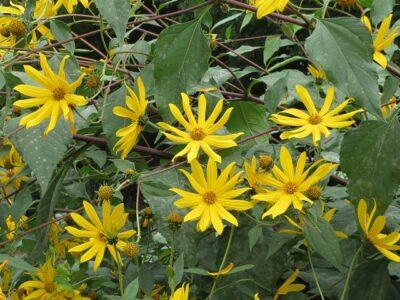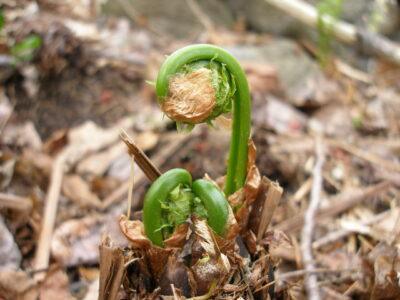While it may not seem like the best time to plant, fall is a really good season to get in some perennial flowers, herbs and yes … delicious and nutritious vegetables.
It is a wonderful thing to know that you can plant once and harvest forever.
You may be familiar with the old-time favorites including asparagus, rhubarb and artichokes, but what you might not know is that there are many more veggies to consider as we wave goodbye to the summer season and welcome fall.
There are many advantages to planting perennial vegetables, including:
- Low maintenance — When planted in the right conditions and well-established, perennial vegetables are there to stay and beg very little from you.
- Harvest extension — Because perennial vegetables have varied seasons of availability than annuals, you can use them to extend your growing season.
- Soil conditioner — Perennial crops are great for the soil because they don’t have to be dug up. They help encourage a healthy web of life beneath the ground, which is essential for prolific plants. Perennial vegetables help improve water retention and overall soil structure.
- Beautification — Perennial veggies are not only delicious but also beautiful. Gorgeous foliage and fruit can help liven up any part of your garden.
Here are five not-so-familiar perennial veggies you should consider planting this fall:
1. Jerusalem artichokes (Helianthus tuberosus, also called sunchokes)
These veggies prized for their underground tubers are in the same family as sunflowers. Eat them raw or cook them like potatoes. Either way, they are simply delicious. They have pretty yellow flowers that attract pollinators and other beneficial insects to the garden.
Emergency Seed Bank Provides THOUSANDS Of Pounds Of Food
Gardeners in USDA plant hardiness zones 4-9 can enjoy these energetic plants that spread by underground rhizomes.
2. Wild leeks (Allium tricoccum)
East of the Mississippi, ramps (wild onions) thrive in deciduous forests each Spring. Many people consider them a local delicacy and gladly take to the forests to collect a harvest. However, rather than a trip to the forest, consider growing your own. Both the leaves and the bulbs are edible. Although some say it is an acquired taste, once you try them you will be hooked. Use them to naturalize under trees or as a shady border in a moist area of your landscape. They are hardy through Zone 4.
3. Ostrich fern (Matteuccia struthiopteris)
It is possible that you have grown Ostrich ferns, also known as “fiddlehead ferns,” in the past because you thought they were so beautiful. If so, you are not alone, as many gardeners choose these plants for cool and shady spots without even realizing that they are edible. Many fine-dining restaurants serve this greenery as a delicacy. Hardy in zones 2-8, both the feathery tops and the stalks are edible and make a delicious and nutritious addition to soups, salads and stews.
4. Scarlet runner beans (Phaseolus coccineus)
Like the ostrich fern, scarlet runner beans are most often prized for their ornamental beauty. However, the fresh beans and dried beans are edible, and the flowers, leaves and tubers are also, as long as they are cooked. These vigorous perennial vines are hardy to zone 4 and have been known to last for more than 20 years.
5. Daylilies (Hemerocallis spp.)
Daylilies are one of the easiest plants to grow. They are perfect for first-time gardeners and even thrive on neglect. Because they require so little care, these robust plants have naturalized across much of the United States, making their home in fields and along roadways. Many gardeners plant them in their yard as borders to add dependable beauty year after year. In Asia, they are grown as a food crop where their flower buds are harvested and eaten like green beans. Flowers can be eaten fresh or prepared in a stir fry or battered. These easy-to-grow plants do well in zones 2-10.
So, when you start to think about veggie gardening, don’t forget to include a few of these not-so-well-known perennial plants. There is no doubt that they will be worth the effort to plant and will reward you for years to come with beauty and a bountiful harvest.
What perennials would you add to this list? Share your tips in the section below:
 Off The Grid News Better Ideas For Off The Grid Living
Off The Grid News Better Ideas For Off The Grid Living






